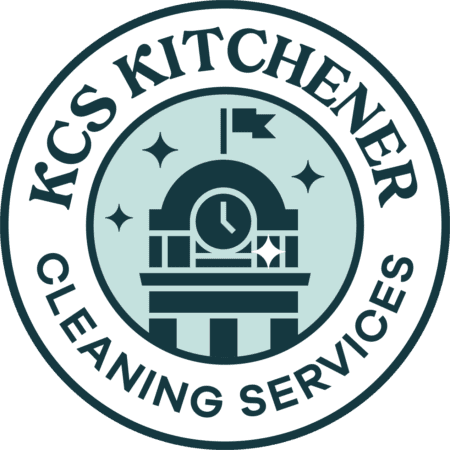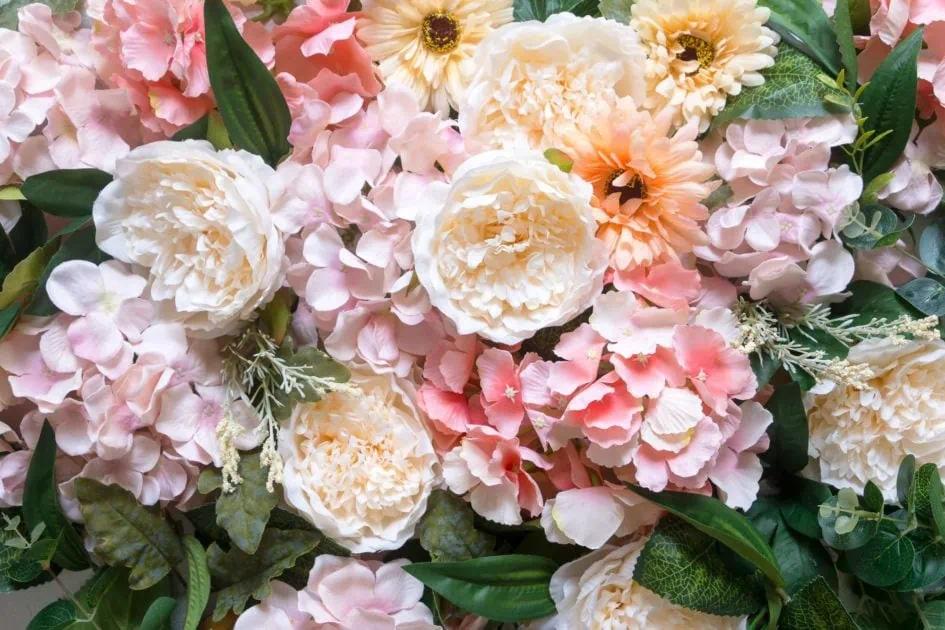Every artificial flower owner should read this article because it provides a comprehensive guide filled with tried-and-true methods for maintaining the beauty and longevity of your faux botanicals.
Enjoying the benefits of artificial plants and flowers, such as their low-maintenance nature and year-round aesthetic appeal, is something many people have come to appreciate.
However, to preserve their vibrant colours and realistic appearance, it’s important to give them a good clean periodically.
What You Will Learn In This Article:
- Tools and techniques for dusting and regular maintenance of artificial flowers
- Cleaning methods for different types of artificial flowers: silk, plastic, and metal
- How to effectively clean artificial flower arrangements
- Deep-cleaning techniques for stubborn dirt and grime
- DIY natural cleaner solutions for artificial flowers
- Strategies to address stains and discoloration on artificial flowers
Cleaning Different Types of Artificial Flowers
Not all artificial flowers are created equal, and thus they do not come with a one-size-fits-all cleaning method.
Cleaning techniques can vary based on the material of your faux blooms – be it silk, plastic, or even metal.
In the following subsections, we will walk you through the best ways to clean each type of artificial flower, providing you step-by-step guidance to ensure your flowers continue to look beautiful and lifelike for years to come.
Cleaning Silk Flowers
Silk flowers are delicate and require careful handling. Silk can trap dust and dirt easily, but with the right methods, you can have your blooms looking fresh and clean in no time.
Cleaning silk flowers with salt can be very effective. Here is how you do it:
- Take a plastic bag that is big enough to accommodate your silk flowers.
- Put the flowers and about half a cup of table salt into the bag.
- Gently shake the bag for a minute or two.
- Take out the flowers and shake off any remaining salt. This should remove the dust.
If the salt method doesn’t remove all the dirt, or if your silk flowers need a more thorough clean, you can use a vinegar and water spray:
- Mix equal parts of white vinegar and water into a spray bottle.
- Spritz the solution onto the flowers, but don’t overdo it. You want the flowers to be damp, not soaking wet.
- Let the flowers air dry.
An alternative to vinegar and water is a gentle soap and warm water solution.
- Mix mild soap with warm water.
- Use a cloth dampened with the solution to gently wipe the flowers.
- Rinse with a cloth dipped in plain water and let the flowers air dry.
Remember, silk flowers can fade if exposed to sunlight for prolonged periods. After cleaning, place them in an area with indirect sunlight.
Cleaning Plastic Flowers
Cleaning plastic flowers is a relatively easy task given their durable material. Here’s how you can do it:
For a simple dusting routine, follow these steps:
- Use a soft cloth or feather duster to gently remove dust from the surface of the flowers.
- You can use a hairdryer set on cool to blow away dust from hard-to-reach areas.
For a deeper clean, you can take advantage of the hardy nature of plastic and use a cleaning agent, such as lemon juice:
- Mix one part lemon juice with one part water in a spray bottle.
- Spray the solution onto the flowers, avoiding getting them too wet.
- Let the flowers air dry or gently pat dry with a clean towel.
The acidity of the lemon juice should help break down any stubborn grime without damaging the plastic. The result is a clean, fresh scent that can rejuvenate your artificial flowers. Remember to rinse your flowers off with water if you notice any residue from the cleaning solution.
Cleaning Metal Flowers
Metal artificial flowers offer a unique aesthetic appeal but can present a different cleaning challenge – tarnish and rust. Here are some methods you can use to keep your metal flowers shining:
- For general dust removal, use a soft cloth or feather duster. Be gentle to avoid scratching the surface of the flowers.
- If your flowers show signs of tarnish, use a mixture of white vinegar and salt. Apply it with a soft cloth and gently rub, then rinse with warm water and dry thoroughly.
- Rust can be removed using a paste of baking soda and water. Apply it to the rusted area, let it sit for about 30 minutes, and then gently scrub it off using a soft cloth or toothbrush. Rinse and dry well after.
Remember, metal flowers must be dried completely after cleaning to prevent the formation of rust. To reduce the chance of tarnish, store them in a dry area away from harsh sunlight and moisture.
Cleaning Artificial Flower Arrangements
Artificial flower arrangements are often larger and may contain a variety of material types, which can make them a bit trickier to clean. Here’s how you can effectively tidy up your arrangements without damaging them:
- Start by gently dusting the entire arrangement with a soft cloth or feather duster. A hairdryer set on cool can also be used to blow away dust from hard-to-reach areas.
- If part of the arrangement includes silk flowers, use the salt-shake method or vinegar-water spray method mentioned above.
- For plastic flowers, a gentle wipe with a cloth dampened with diluted lemon juice can be effective.
- Metal flowers in the arrangement can be wiped clean with a dry, soft cloth.
Remember to also clean the vase or pot that houses the arrangement. Use a cloth dampened with soapy water to wipe the interior and exterior of the container, rinse with plain water, then dry thoroughly.
Deep Cleaning Techniques for Stubborn Dirt and Grime
When your artificial flowers have accumulated stubborn dirt and grime, they might require a deep cleaning session. Don’t fret – with the right cleaning agents, your blooms can be restored to their former glory.
Using Soapy Water
One proven method involves the use of mild detergent:
- Fill a sink or large container with warm water and a few drops of mild detergent.
- Immerse the flowers into the soapy water and gently agitate them.
- Be gentle not to damage petals and leaves, especially for silk flowers.
- Rinse thoroughly with clean, lukewarm water.
- Shake off the excess water and allow the flowers to air dry.
Using Rubbing Alcohol
For a more potent clean, consider rubbing alcohol:
- Fill a spray bottle with one part rubbing alcohol to two parts water.
- Lightly mist your artificial flowers, ensuring all areas are covered.
- Allow the flowers to air dry. The solution will evaporate, leaving the flowers clean and sanitized.
Remember: always test a small, inconspicuous area first before cleaning the entire flower, especially when using cleaning agents. This will help ensure that your cleaning solution won’t cause discoloration or damage to the material.
Come Home to a Sparkling Clean House!
Let our professional cleaners help you live a more comfortable and relaxing life. Sign up for a regular cleaning service and let our team keep your home looking and smelling fantastic!
DIY Natural Cleaning Solutions for Artificial Flowers
For those who prefer using natural and home-made cleaning solutions, there are effective options that can be easily prepared. Natural cleaners are not only cost-effective but also environmentally friendly and safe for homes with kids and pets.
Below are two simple recipes using everyday items.
Vinegar and Lemon Solution
- Combine equal parts of white vinegar and lemon juice in a spray bottle.
- Shake the bottle to mix the ingredients together well.
- Lightly mist the artificial flowers. Be careful not to drench them.
- Allow the flowers to air dry.
Salt Scrub
- Place the silk flowers in a bag with a half cup of table salt.
- Secure the bag and shake it gently.
- The abrasive salt will scrub away the dust and dirt while being gentle on the flowers.
- Carefully remove the flowers from the bag and shake off any remaining salt.
These natural cleaning solutions are gentle on your artificial flowers and can leave them looking fresh and clean.
Addressing Stains and Discoloration on Artificial Flowers
Over time, artificial flowers, especially lighter colored or white ones, may show signs of stains or discoloration. Here’s how you can tackle these issues and restore your blooms to their original beauty:
For general discoloration:
- Prepare a mixture of equal parts white vinegar and water in a spray bottle.
- Spray the solution onto the discolored areas of the flowers.
- Allow the flowers to sit for a few minutes before gently blotting them with a clean cloth.
- Rinse the flowers well with warm water and let them air dry.
If you have stubborn stains on your silk or white flowers:
- Make a gentle cleaning paste with baking soda and water.
- Apply the paste to the stained area with a soft cloth or a soft-bristle toothbrush.
- Gently scrub the stain, taking care not to damage the flower.
- Rinse thoroughly with warm water and allow the flowers to air dry.
Remember to test the cleaning solution on a hidden spot of the flower first to ensure it will not cause additional discoloration. Regular cleaning and routine checks for stains can help maintain the beauty of your artificial flowers.


